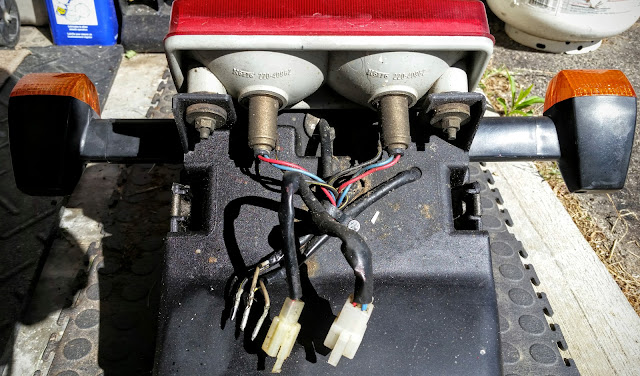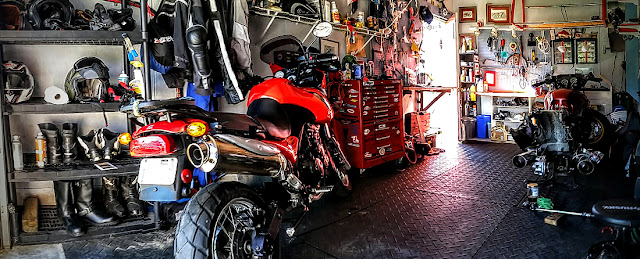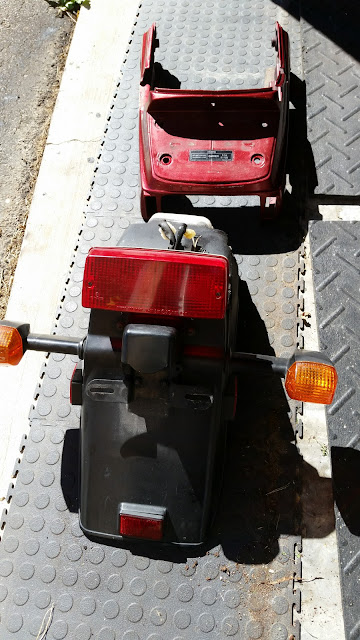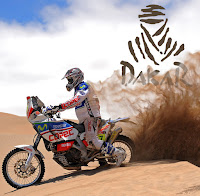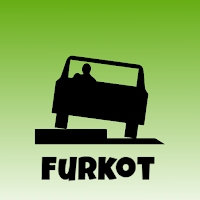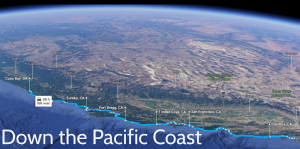The idea of genuine communication and showing students teachers as people rather than representatives of the education system has appeared several times on the PLN lately. Consequently, transitioning from summer to the school year has me overlapping my writing subjects. This was originally published on Tim’s Motorcycle Diaries…
I’m back in the classroom again and teaching English for the first time in more than a year. I took a senior essentials English class mainly because few people want to teach it (teachers like to teach people like themselves – in this case academically focused English students), and it fit my schedule. Essentials English is just as it sounds. These are weak English students who are getting what they need to graduate and get out into the workplace, they aren’t post-secondary bound and tend to find school pointless.
The trick with students this bullied and indifferent to the school system is getting them to read and write at all. Rather than drag them into a text book or make them watch the department copy of Dead Poets Society in order to prompt some writing, I thought I’d introduce them to my insanity. In a week where we’re all getting to know each other it helps if students see what you’re into. Showing your hobbies and interests is a good way to have them become familiar with you and relax a bit. If they get excited about the idea of planning a trip and it prompts them to write, it’s a many birds with one stone situation.
 |
| With some support, students quickly got into planning a trip. 28 days, unlimited budget! |
The plan was pretty straightforward: you’ve got four weeks (28 days) starting next Monday. Assume you’ve got an unlimited budget for a road trip (gotta travel on the ground). Where would you go? What would you do? On the second day I gave them some pointers on Google Maps and some planning tools like a calendar and how to make notes online and they were off. At the moment it looks like I’ve got pages of writing from students who generally don’t. The research they’ve been doing also lets me diagnose their reading level.
Needless to say, I bravely volunteered to present first. It doesn’t feel like homework when you enjoy doing it, and mine was obviously going to be a motorcycle trip. I probably could have gone more bonkers on bike choice, but I have a sentimental attachment and some practical necessities that prompted my choice (all explained in the presentation). Rather than go for the South American adventure, I decided to focus on The States, which has tons to offer, especially if you aren’t sweating the budget.
Norman Reedus’ RIDE gave me an idea of where I’d like to go, the question was, could I get to the locations in the show and back home in 28 days?
Here’s what I’m presenting:
I presented this to the class two days before it was due. Seeing an example helps and gave me a chance to explain my own process in putting together the trip (deciding on a vehicle, breaking the trip into sections, etc). Many of them had collected data but were having trouble formulating it into a written project or verbal presentation (their choice).
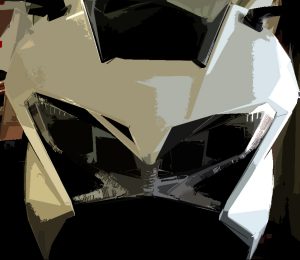 |
| That photo I doctored of a VFR800 a couple of years ago came in handy! |
Another side benefit of something like this rather than a boiler plate reading and writing diagnostic is that is gives students a lot of control over the direction of their writing, which means I get to learn what they’re into, which helps me remember who each person is as well as offering me relevant subjects I can insert into future projects.
I’m hoping they surprise themselves with the results. If I catch some of them in the future staring wistfully at Google Maps instead of playing pointless FLASH games I’ll know that they’ve been bitten by the travel bug too!
 |
| It’s a lot to try and pull off in 28 days, but when the budget is unlimited, I want more miles! Literacy weak students often have trouble with basic digital tools – they were all screen grabbing Google Map images by the end of the first day though. This’ll help in all sorts of classes. |
 |
| Into the Rockies ASAP, then down the coast, across the mountains again, and then up the Appalachians home. |
 |
| Multiple destinations on Google Maps is a simple enough process if you know how. Everyone does now. |
 |
| Yellowstone! Riding over a mega-volcano. No one in the class realized we lived so close to this impending disaster. It led to an impromptu Geography lesson. |
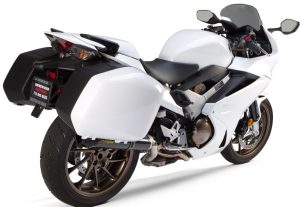 |
I was thinking maybe an H2R or RC213 in a trailer, but then that meant driving a truck and trailer all over the place.
Better to be on two wheels all the time, and on the descendant of my first bike crush.
Students were very curious about my choices. How you travel says a lot about you. |
NOTE: at the end of the course more than half the class chose this project as a summative five minute presentation, and they all exceeded the time, media and planning requirements on it. Who said English projects couldn’t be enjoyable and engaging?
 I put the Concours up for sale for a very reasonable $1200 and immediately got a bunch of low ball offers. After a week of talking to cheap idiots I pulled it back off Kijiji, this bike deserves better than that. I sympathize with people who can’t afford the hobby, but I never agreed to support that charity.
I put the Concours up for sale for a very reasonable $1200 and immediately got a bunch of low ball offers. After a week of talking to cheap idiots I pulled it back off Kijiji, this bike deserves better than that. I sympathize with people who can’t afford the hobby, but I never agreed to support that charity.



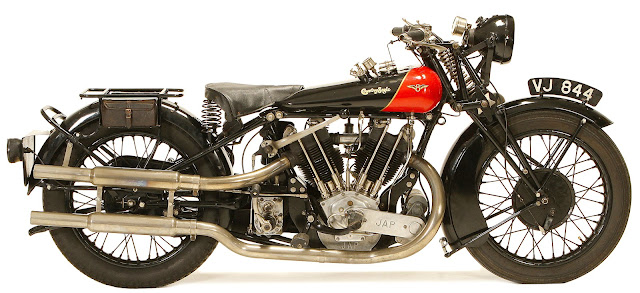
I stripped off the front fairings, mirrors and windshield. That has to be about twenty pounds right there. At the back I removed the pannier frames and the rear tail light assembly. That’ll be another easy ten pounds worth of odds and ends. By the time I’m done, this bike will be an easy 100lbs lighter.
The entire rear frame that holds the panniers, seat and rear light assembly is bolted on under the seat. Removing it seems pretty straightforward. With the rear frame gone, the Concours starts to look more like a streetfighter than a sport tourer. With the back end gone it was easy to remove the rear tire and get into the shaft drive which has been leaking.


